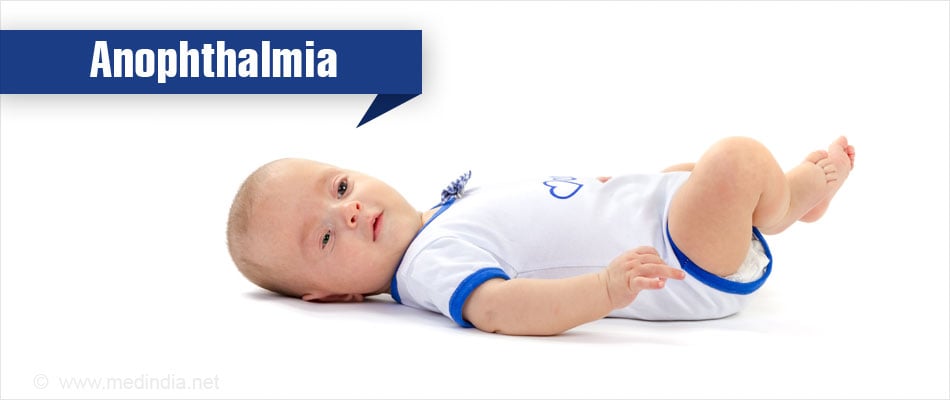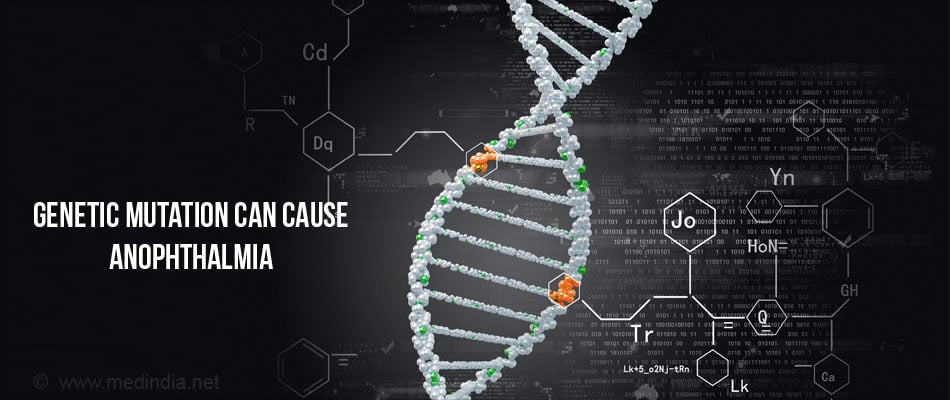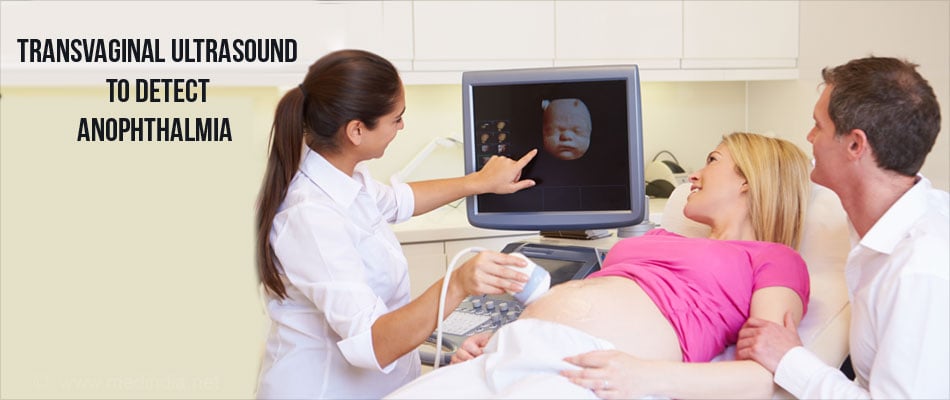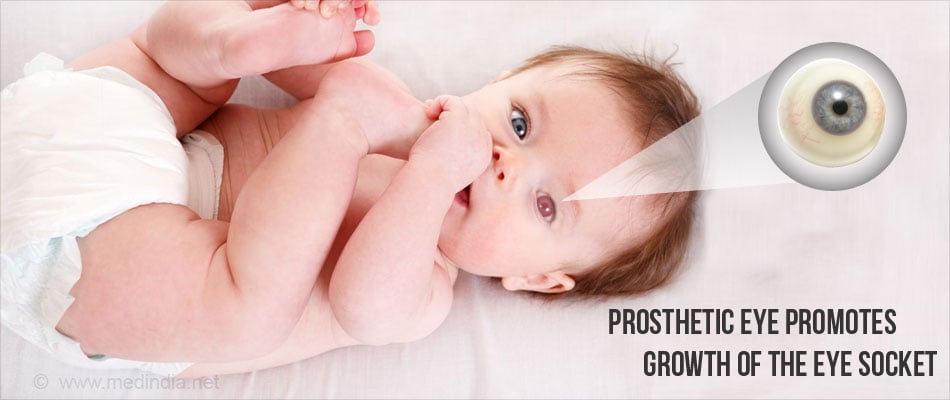- Anophthalmia and Microphthalmia - (https://nei.nih.gov/health/anoph/anophthalmia)
- Facts about Anophthalmia / Microphthalmia - (http://www.cdc.gov/ncbddd/birthdefects/anophthalmia-microphthalmia.html)
- Verma AS, FitzPatrick DR. Anophthalmia and Microphthalmia. Orphanet Journal of Rare Diseases20072:47 DOI: 10.1186/1750-1172-2-47
What is Anophthalmia?
Anophthalmia is an eye disease where the baby is born without one or both eyes.
The birth defect occurs due to a problem during development of the tissues that normally form the eye, resulting in congenital blindness. Incidence is around 3 per 100,000 population with no male/female or racial predominance.

What are the Types of Anophthalmia?
Depending on the severity of the condition and the amount of eye tissue present, anophthalmia can be classified as:
- True anophthalmia, where there is complete absence of eye tissues
- Extreme microphthalmia, where a small globe of tissue is present instead of the eye
- Clinical anophthalmia, which is an intermediate condition between true anophthalmia and extreme microphthalmia
Anophthalmia may also be classified based on causes as:
- Primary anophthalmia, where there is no development of the eye (optic pit failure)
- Secondary anophthalmia, where development of the eye starts but stops during the process (anterior neural tube defect)
- Degenerative anophthalmia, where the eye begins to form but later undergoes degenerative changes during fetal life
What are the Causes of Anophthalmia?
Anophthalmia arises due to a genetic mutation. The defect has been noted either in a single gene or an entire chromosome. Mutations in the SOX2 gene have been implicated in the condition.

Alternatively, an entire chromosome may be absent or may be duplicated or may undergo translocation, where a segment of a chromosome is transferred to a different chromosome. These mutations may be associated with other features like corneal sclerosis, cataract, optic disc problems, mental retardation and facial dysmorphisms.
Some of the factors that may increase the risk for anophthalmia include:
- Maternal age over 40 years
- Multiple births
- Low birth weight
- Premature delivery
- Exposure to radiation including x-rays during pregnancy
- Exposure to certain chemicals, drugs, pesticides or alcohol during pregnancy. The drugs thalidomide and warfarin have been implicated
- Certain viral infections during pregnancy like German measles, toxoplasmosis, varicella and cytomegalovirus
- Vitamin A deficiency in mother
- Misuse of solvents by the mother during pregnancy
What are the Symptoms and Signs of Anophthalmia?
Anophthalmia is diagnosed at birth on noting an empty eye socket. The eye socket may be smaller in size. The tear gland and eye muscles are usually absent. Children who have not been treated soon after birth may have a problem with development of the affected side of the face resulting in asymmetry.
Other body systems may also be affected when anophthalmia is a part of a syndrome. For example, lung, heart and learning defects occur along with anophthalmia in patients with mutations of the STRA6 gene.
How do you Diagnose Anophthalmia?
Diagnosis of anophthalmia and its cause are made through:
- Clinical features of the baby, which show an obvious absence of the eyeball
- History obtained from the patient, which may indicate the cause of the anophthalmia. A positive family history may indicate the presence of an inherited genetic disorder
- Imaging tests like ultrasound and CT/MRI to check for anomalies. Transvaginal ultrasound can be used in prenatal diagnosis of anophthalmia, which can detect the condition by the end of the first trimester of pregnancy

- Genetic studies may indicate a problem in a gene or a chromosome. Genetic testing can be done on fetal cells to predict a possible genetic disorder.
How do you Treat Anophthalmia?
It is not possible to restore vision in the absent eye in anophthalmia. However, the cosmetic effect can be improved by using a prosthetic device. Conformers are used till around the age of two years since they have to be frequently changed. Conformers differ from prosthetic eyes in that they are not painted. Inflatable expanders may be used instead of conformers.
After around two years of age, conformers are replaced with a prosthetic eye, which is painted to match the normal eye. Like conformers, the prosthetic eye also promotes the growth of the socket. It will also have to be replaced a few times according to the facial growth in the growing years. Unfortunately, the eye prosthesis cannot move, thus a normal looking eye cannot be completely achieved.

Reconstruction of the eyelid may be necessary to lengthen the short eyelid.
Anophthalmia could be a distressing condition for the parents. The facts about anophthalmia should be explained to the family. Genetic counseling is offered if there is a chance that the genetic defect will be inherited by subsequent generations.
Adequate care of the unaffected eye will ensure that some vision is maintained in the child.






